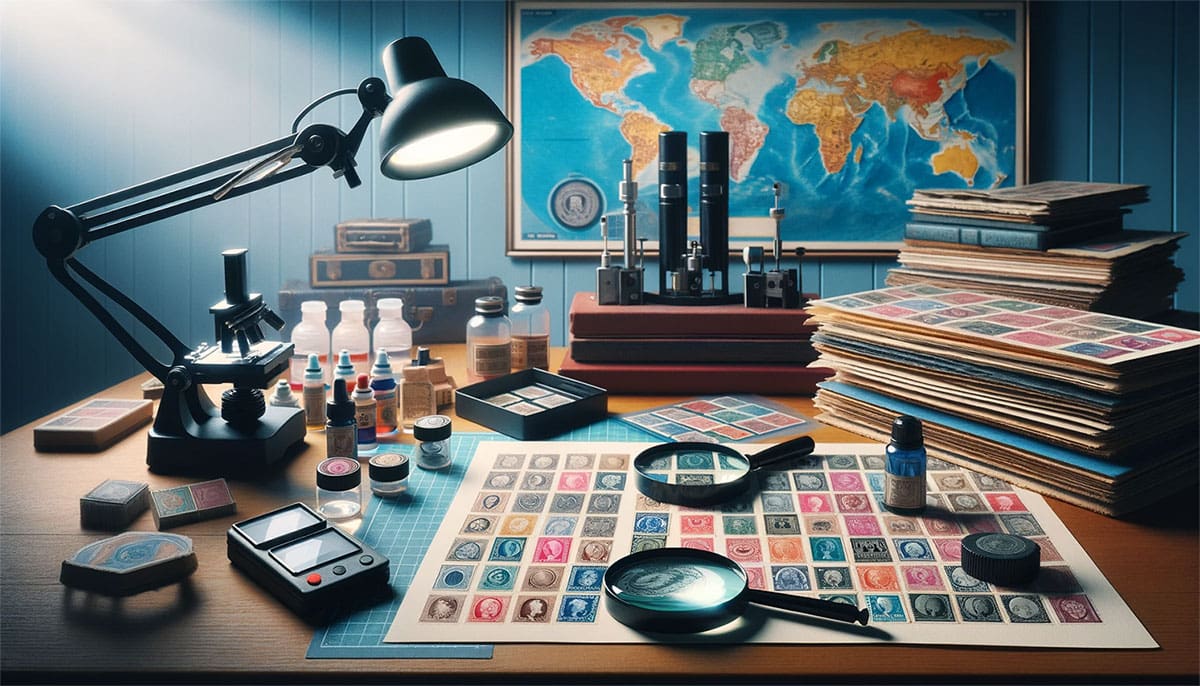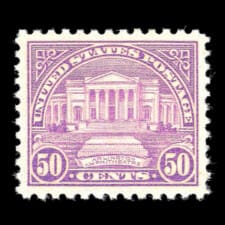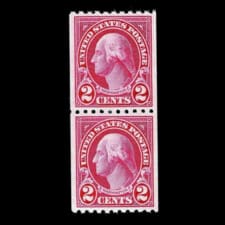Detecting stamp thins is a crucial aspect of philately, the hobby of collecting and studying stamps. “Thins” refer to areas where part of the stamp’s paper has been removed, often due to improper removal from an envelope or other mishandling.

These defects can significantly reduce a stamp’s value, so it’s essential for collectors to know how to identify them. However, thins can sometimes be difficult to detect. They can be very tiny, or not visible to the naked eye. Thus, special techniques must be used when inspecting a stamp for thins.
Best Ways To Detect Stamp Thins
1. Visual Inspection
- Lighting: Use a strong light source. Hold the stamp up to the light, and look for any irregularities in the paper. Thins will stand out if the paper is not a consistent tone under the light. If there are any lighter areas in the stamp, they may be thins. The only other exception would be watermarks.
- Magnification: A magnifying glass or a stamp loupe can help you see finer details that are not visible to the naked eye.
2. Feel the Surface
- Texture: Gently run your finger over the stamp’s surface. Thins may feel smoother or have a different texture compared to the rest of the stamp.
- Thickness: Compare the thickness of different areas. Thins will be thinner than the surrounding paper.
3. Watermark Detection Fluid

- Use Watermark Fluids: Special fluids can be applied to the back of the stamp to temporarily reveal watermarks and any thin spots without damaging the stamp or disturbing it’s original gum. Surprisingly, lighter fluid will also work the same way as watermark fluid at a fraction of the cost. Be sure to us pocket lighter fluid like Ronsonol, and not charcoal lighter fluid. The downside is it does have a strong odor, compared to watermark fluid which is usually orderless.
- Safety Precautions: Be sure to use these fluids in a well-ventilated area and follow all safety instructions.
4. Backlighting Technique

- Backlit Surface: Use a strong light designed for stamp inspection. We prefer Ott Lights because they provide near daylight color and clarity. You can find them on stamp supply websites or Amazon. This can highlight thins that are not visible under normal lighting.
- Compare with a Normal Stamp: Having a reference stamp with no defects can help you understand what a normal backlighting pattern should look like.
5. Handling and Storage
- Careful Handling: Always handle stamps with tongs to avoid causing thins or other damage.
- Proper Storage: Store stamps in a dry, cool place, in appropriate stamp albums to prevent damage.
6. Consulting with Experts
- Seek Advice: If you’re unsure, consult with experienced collectors or a professional philatelist.
- Philatelic Societies: Joining a stamp collecting society can provide access to resources and expert knowledge.
Detecting thins in stamps is a skill that develops over time. It combines a keen eye for detail with careful handling and the use of specialized tools. By following these steps, collectors can better assess the condition and value of their stamps, ensuring the integrity of their collections. Remember, preserving the original state of a stamp is paramount in philately, making the detection and avoidance of thins an essential practice.


















Ask A Question Or Leave A Comment